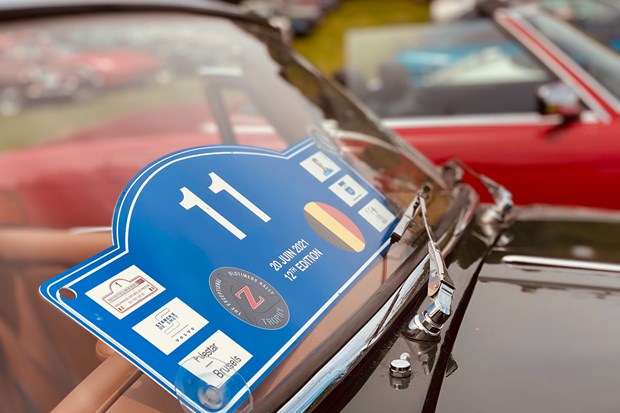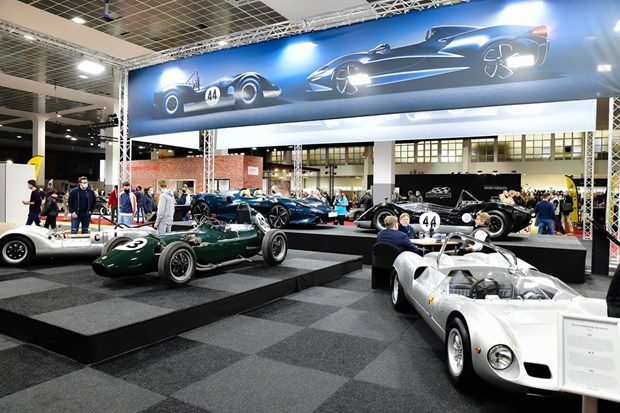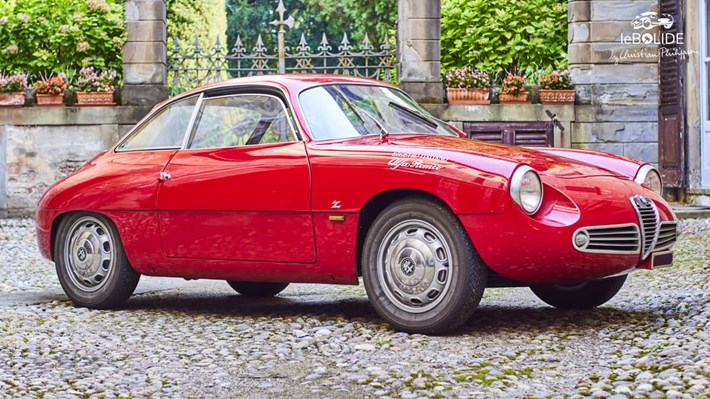
Our partner leBolide.com is making news. The auction of a rare car, the Alfa Romeo Giulietta Sprint Zagato prototype 00001 from 1959, will start soon.
Description
History
The Giulietta is an emblematic Alfa Romeo model that has been declined in all body styles. In turn coupe, saloon and spider, its sporty character reached its peak with the Sprint versions, culminating in the examples bodied by Zagato. After a few special orders placed with "Zagatino", as Enzo Ferrari liked to call him, as early as 1956, and known under the name of Sprint Veloce Zagato (SVZ), Alfa Romeo entrusted him with the production of a small series in 1959, which was simply called the Sprint Zagato (SZ), or also Tipo AR10126. More sophisticated and lighter than the SVZ, it was born with a rounded tail (coda tonda) before evolving into a truncated tail (coda tronca).
Designed by Ercole Spada, the streamlined lines are simplified and the use of aluminum panels allowed for a weight significantly under the 800 kg threshold. With its tubular steel subframe, its 2.25 m wheelbase, its 1290 cc twin-cam 4-cylinder alloy engine, fed by two Weber double-body Ø40 carburettors, delivering 100 bhp at 6,500 rpm and its 5-speed manual gearbox transmitting the power to the rear wheels, the SZ was soon to make its mark in competition.
The SZ prototype was officially presented at the Geneva Motor Show in March 1960 (photos 136 and 142). It bore the chassis number AR10126 00001. This is the car shown here. It was the first of a series of some 200 cars and was produced on 19 December 1959. As can be seen from the documents of the time, the car was painted in silver grey and the headlights were covered. Barely 8 weeks later, it started in the Naples Grand Prix entered by the Scuderia Sant Ambroeus, of which Elio Zagato was one of the founders, and driven by Sergio Pedretti alias "Kim" (he had chosen this pseudonym in reference to the actress Kim Novak, of whom he was a fervent fan). In the meantime, the front had been modified and the headlight fairing removed to provide better lighting, and the colour had been changed to red, the official colour of Italy in competition. However, 00001 still retains a number of Geneva details that make it unique and distinguish it from the production models, such as the door handles, the seats inherited from the SVZ and some of the dashboard fittings.
After a 2nd place overall and a class victory in Naples, Kim won another 2nd place overall in the Giro di Calabria, followed by numerous victories crowned at the end of 1960 by the title of Italian Champion in the 1300 cc Grand Touring category (photos 137 to 139). A dedication by the driver is present on the inside of the left door (photo 077). It is likely that the engine was prepared by Facetti, the tuner hired by Scuderia Sant'Ambroeus, which produced up to 115 hp.
The car continued its sporting career in the following years in the successive hands of Luciano Conti and Arnaldo Cappa. The Bolognese coachbuilder Giuseppe Brusiani, still in business today, acquired it according to his memory in 1968/69. At that time it was white and the engine was dismantled. After entrusting the reassembly to the now defunct Officine Dardani and repainting the body in red -that was his profession!-, Brusiani put it on display in his workshop and never used it. He sold it 5 or 6 years later to Edo Ansaloni, creator of a military museum in Bologna, who died in 2020. In 1982, it was acquired by a historic car enthusiast from Northern Italy and had the Italian registration certificate drawn up in the name of Veteran Racing Cars Bergamo, of which he was a founding member. His untimely death in 1989 led to the transfer of ownership to his heirs who still own the car. 00001 has thus spent its entire life in Italy and has a clear history.
The odometer shows 19515 km, impossible of course to guarantee but perhaps real. Since the end of its agonistic career, the car has indeed barely been driven. It has taken part in a few meetings of the Registro Italiano Alfa Romeo and travels between 200 and 400 km per year for maintenance. The vehicle is homologated by the AutoMotoClub Storico Italiano (ASI). A technical inspection was carried out in August 2020.
The seller does not report any malfunctions. A detailed condition report is given below. In summary, 00001 is now in excellent working order and ready to go on the road. It still has its original engine, as confirmed by the Alfa Romeo archives (photo 143), and this is exceptional for a racing machine. Although it also presents very well, it is not in concours condition. The buyer can choose to use it as is, or to return it to the condition it was in when presented in Geneva, or when it won the Italian Championship. Whatever the choice, 00001 is and will remain a unique car!
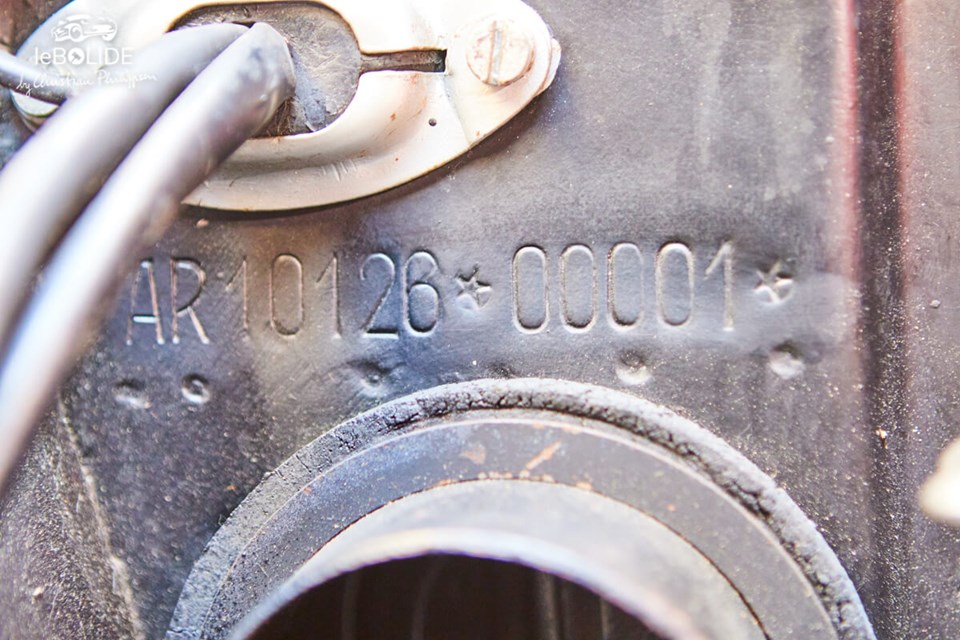
Exterior
The bodywork is original, as it left the Zagato workshops with minor modifications after the 1960 Geneva Show. It is noticeable from the period photos that the air intakes surrounding the vertical grille had two horizontal bars (photos 140). Today there are three. One can imagine that racing had left some traces and that these decorative elements were replaced by production parts. Minor defects can be seen on the slightly pitted headlight rings (photos 022, 049 and 050), the rear view mirror (photo 052), the front grille (this one also shows a small impact mark - photos 020, 023 and 024), the rear plate lights (photo 035). The roof edge on the right side is cracked and deformed (photo 028), the one on the left side has scratches (photo 041). The window frames show some minor scratches (right side, photos 028 and 030, left side, photos 041 and 042). There are paint chips on the front of the car, on the Zagato logo on the right front wing and on the seal of the left door (photo 132). The underside of the left door is also deformed (photo 128). The boot seal rubber is torn at the top left (photo 072). There are paint blisters on the right door handle (photo 027) and the end of the left rear wing (photo 038). The side windows are made of acrylic glass. Almost insignificant traces of oxidation can be seen on the fuel tank filler hole in the trunk (photo 068), on various parts of the front axle (arms and tie rods, photos 129 and 130), as well as on the underside of the chassis (photo 031). The original rims are fitted with Pirelli Cinturato CN36 175/70 VR 15 tyres with a remaining profile of about 70%. The spare wheel is fitted with a new Pirelli.
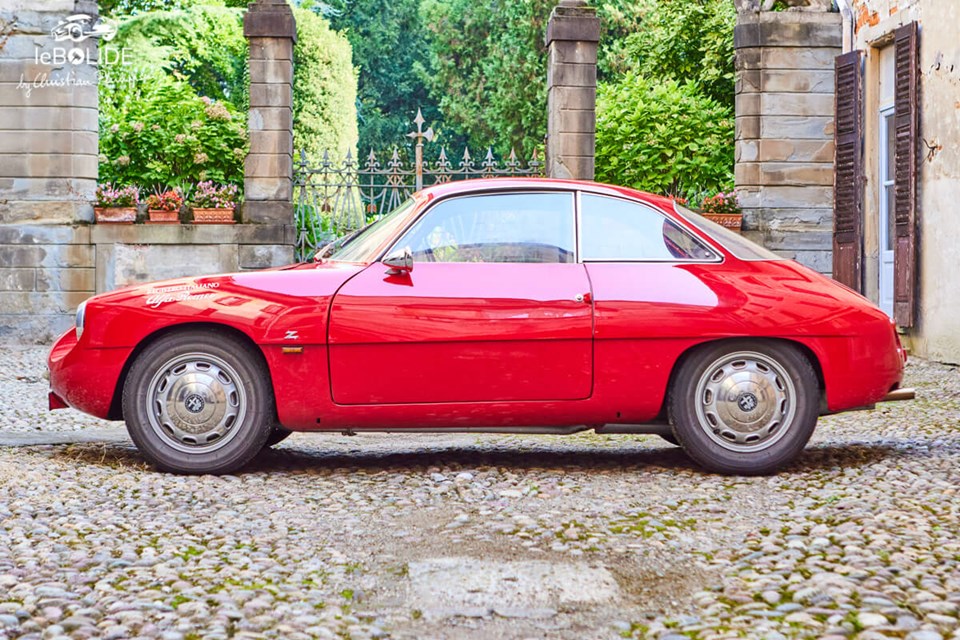
Interior
The interior is completely original. The leatherette seats and floor mats have a patina consistent with the age of the vehicle (photos 093 to 098). There are traces of corrosion on the seat frames (photos 124 and 125). The chrome on the door handles (photo 085), window regulators (photo 084), rear window scissors (photos 117 and 118), handbrake handle (photo 091) and glovebox release button (photo 103) is tarnished and slightly pitted (photos 121 and 122). On the passenger side, the floor is worn and cracked (photo 113). This defect is hidden by the floor mats covering it. The chrome of the gear lever stem is faded (photo 105). The original instrumentation is complete and in working order. Sabelt harnesses have been fitted.
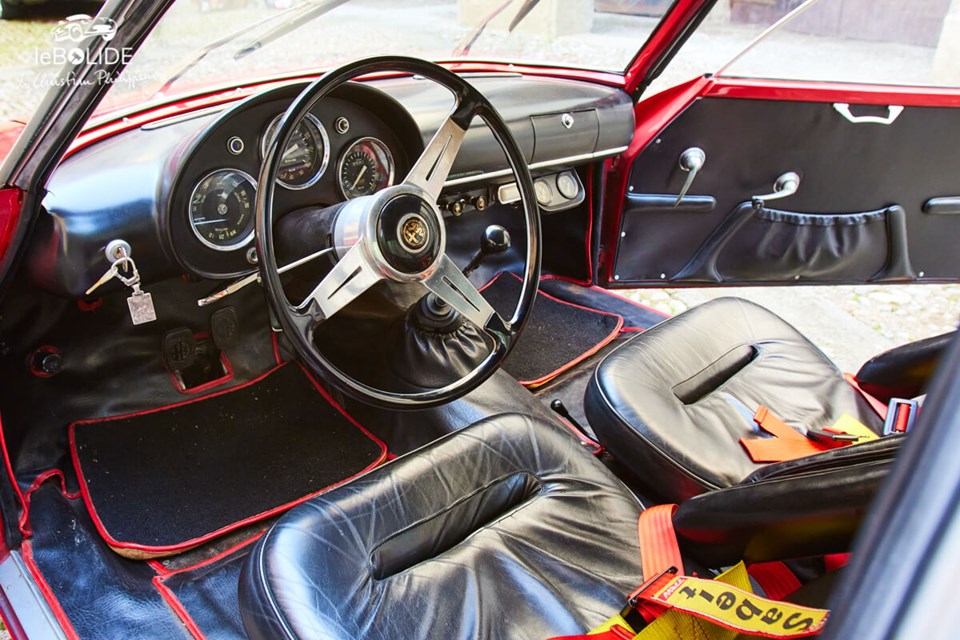
Mechanical
It is exceptional that a car that has been racing still has its original ‘matching numbers’ engine after 60 years as is the case here (photo 143). It has not been in need of major work for 40 years, nor has the transmission, apart from periodic maintenance which was last carried out in 2020.
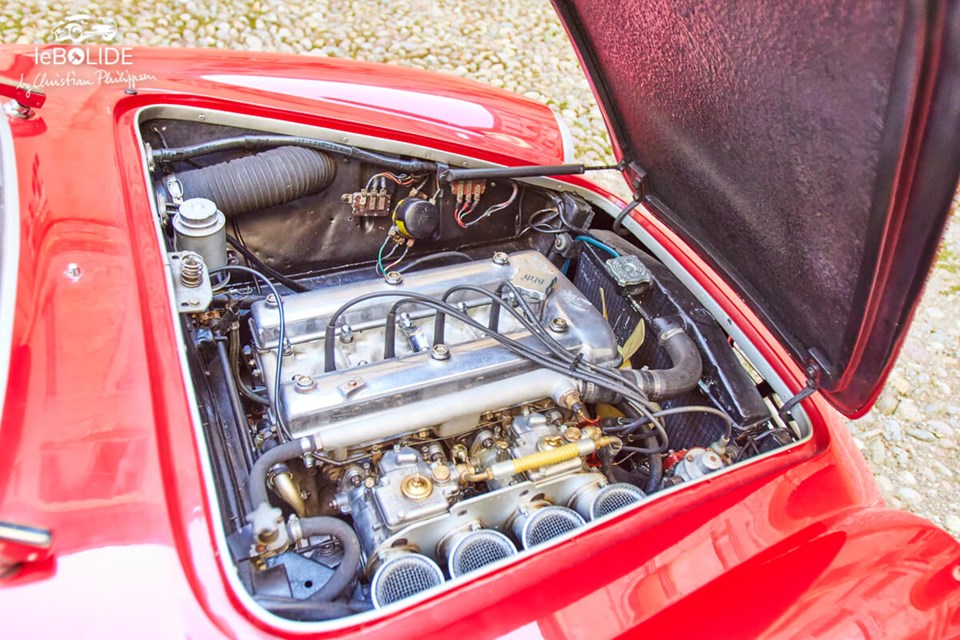
Bidding?
Bidding on this lot of worldwide interest take place on the American website Bring a Trailer Premium (BaT) as from 7/1/2022. To avoid any confusion, leBolide.com will suspend this ad for the duration of the auction on BaT: LINK TO THE AUCTION.























































































































































